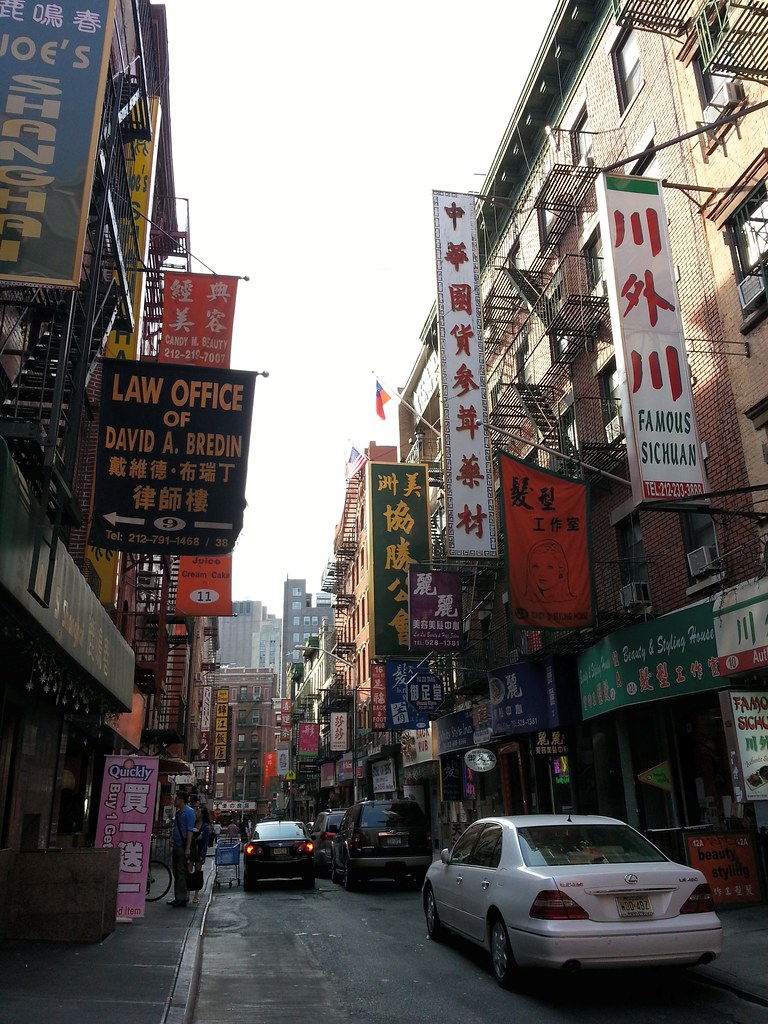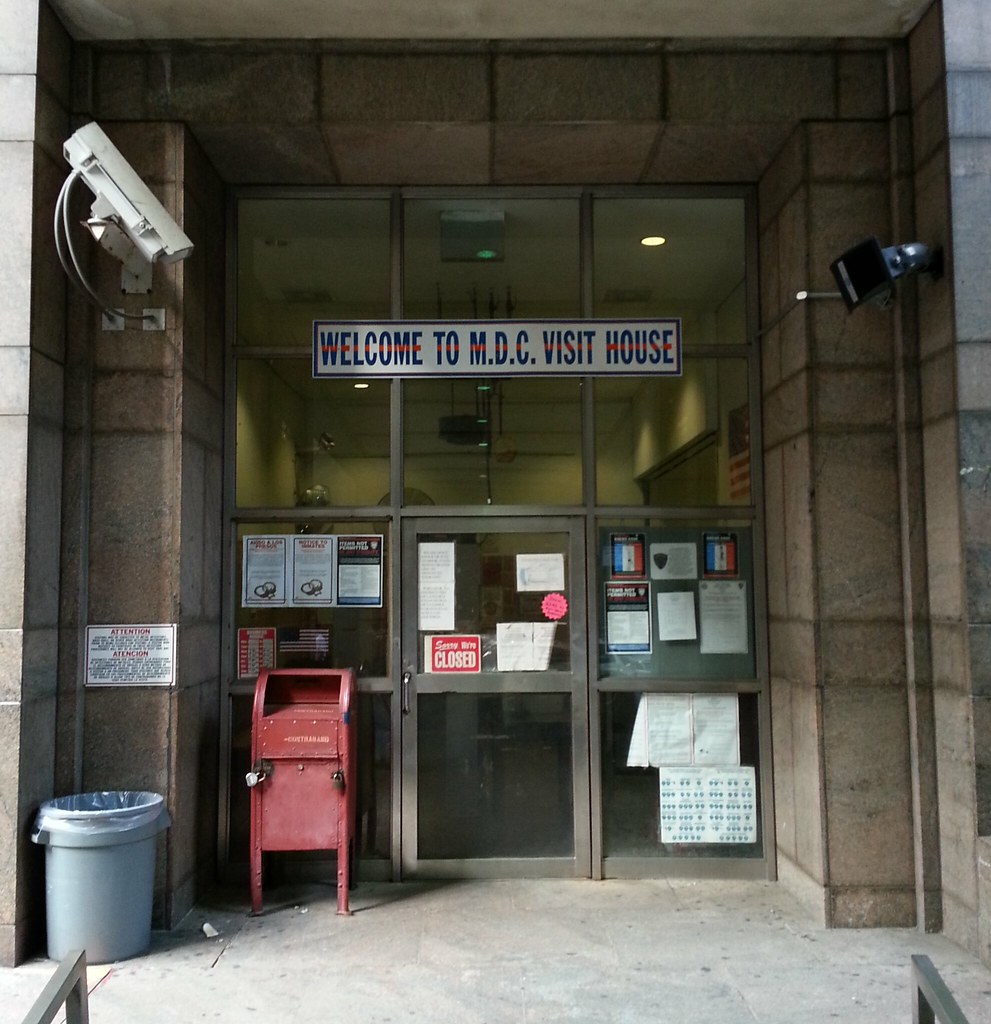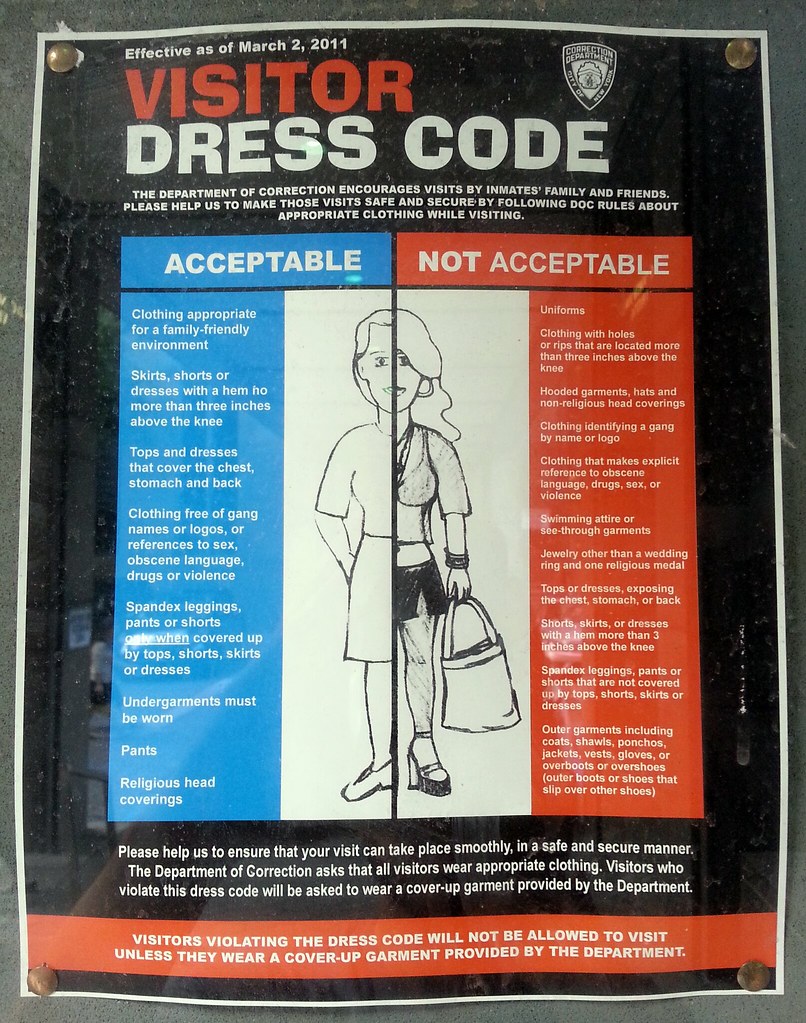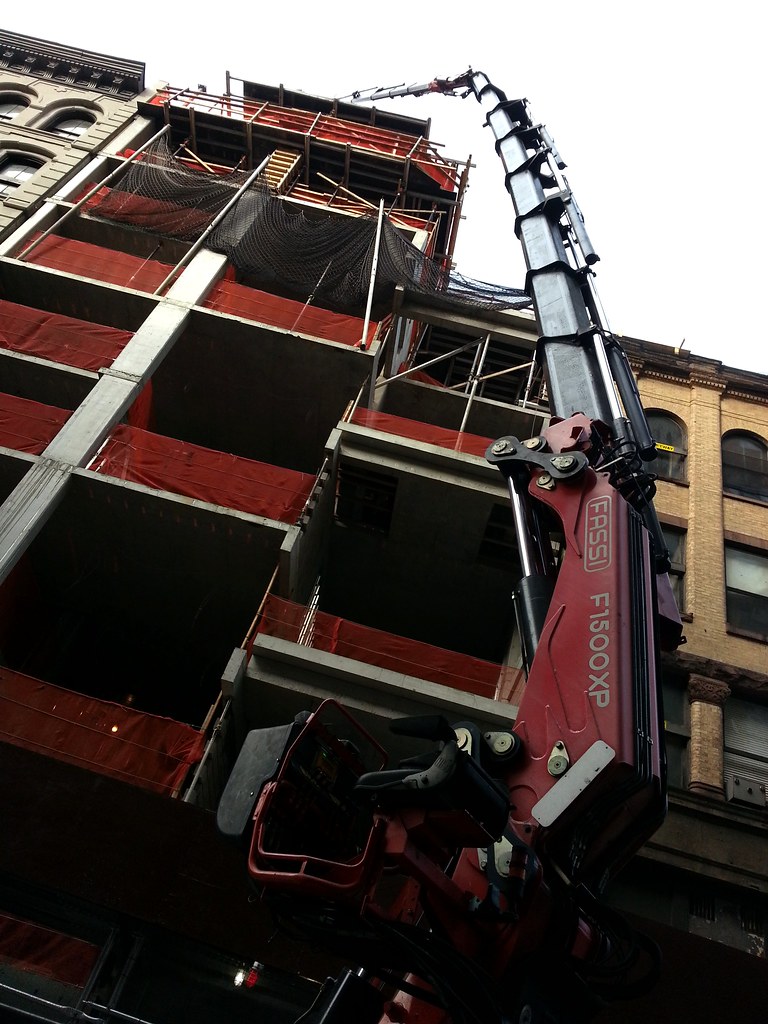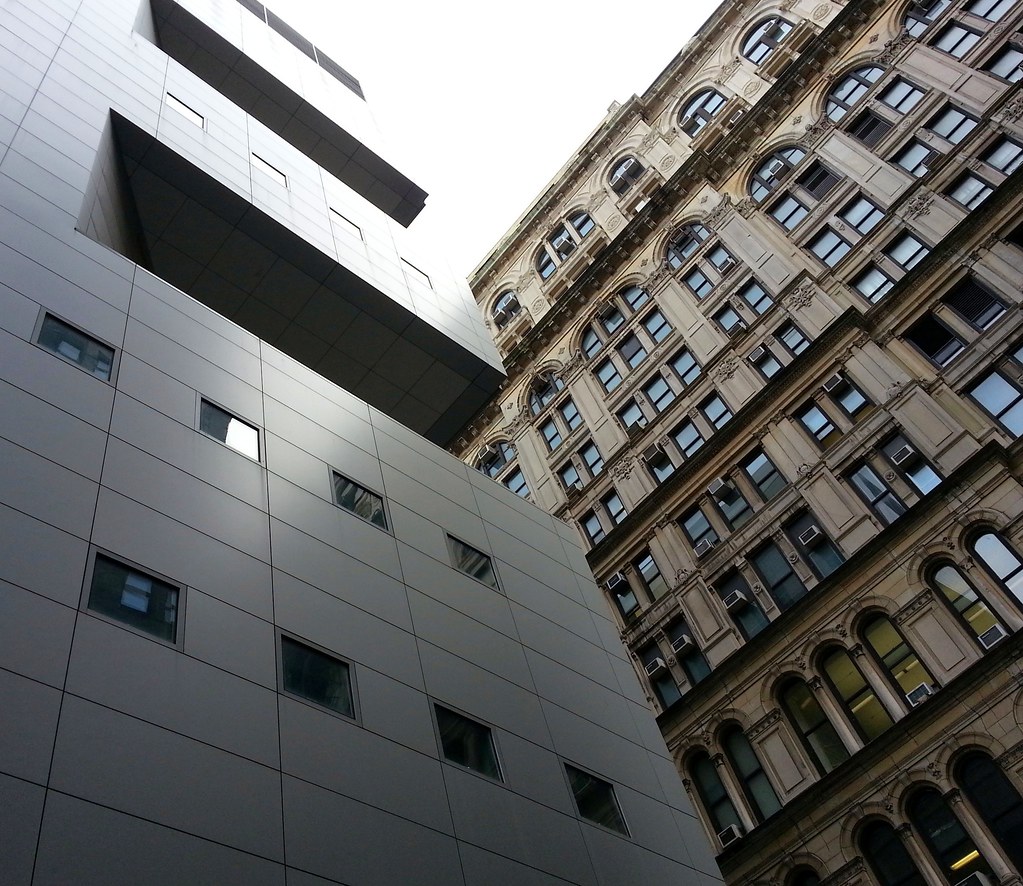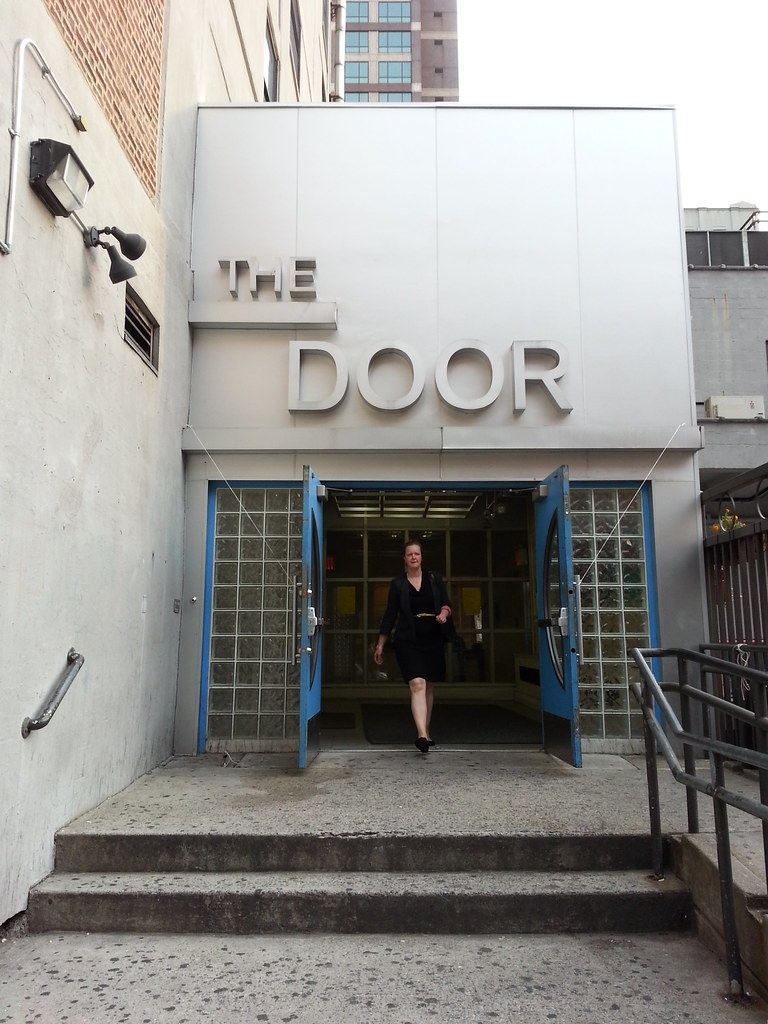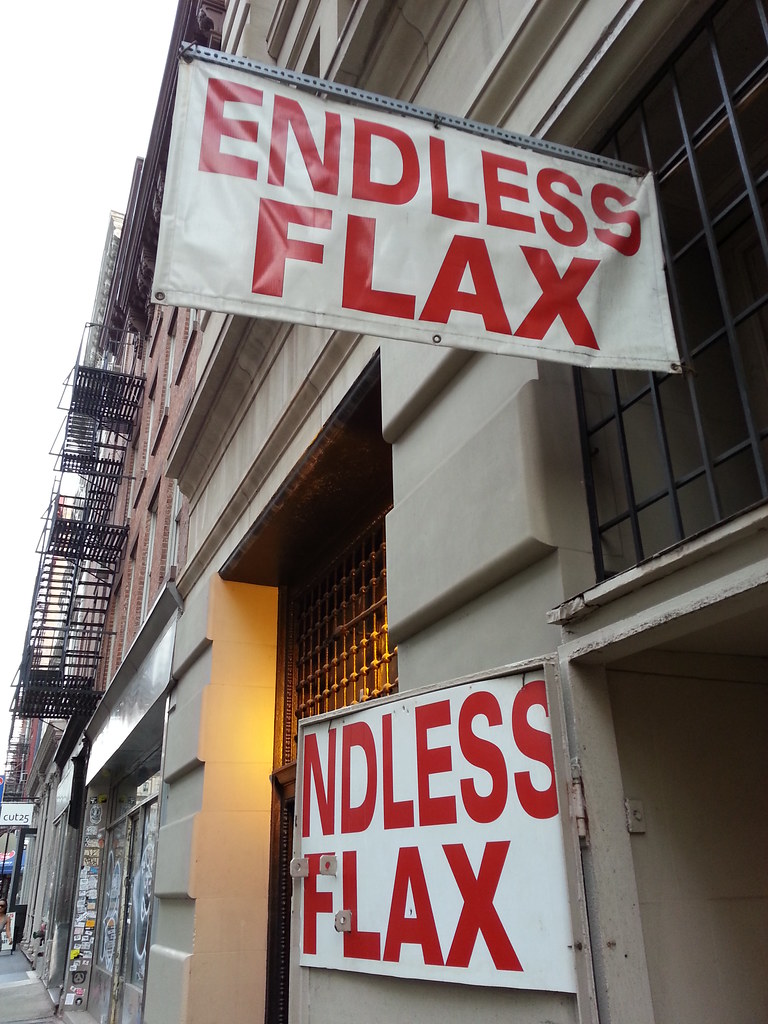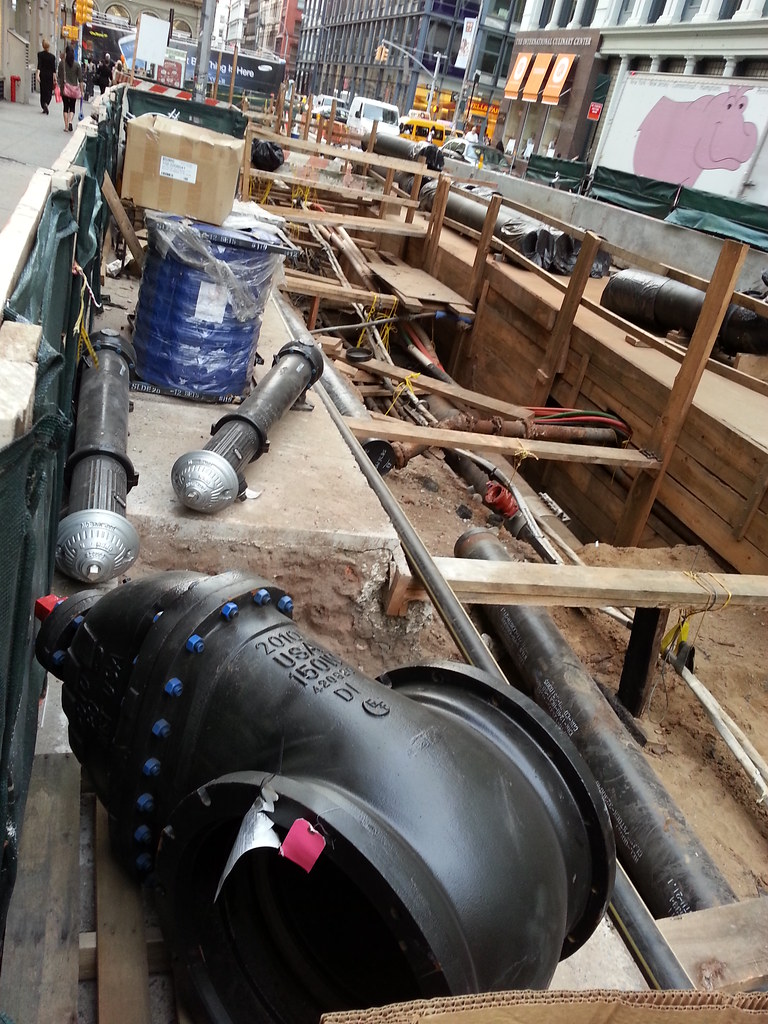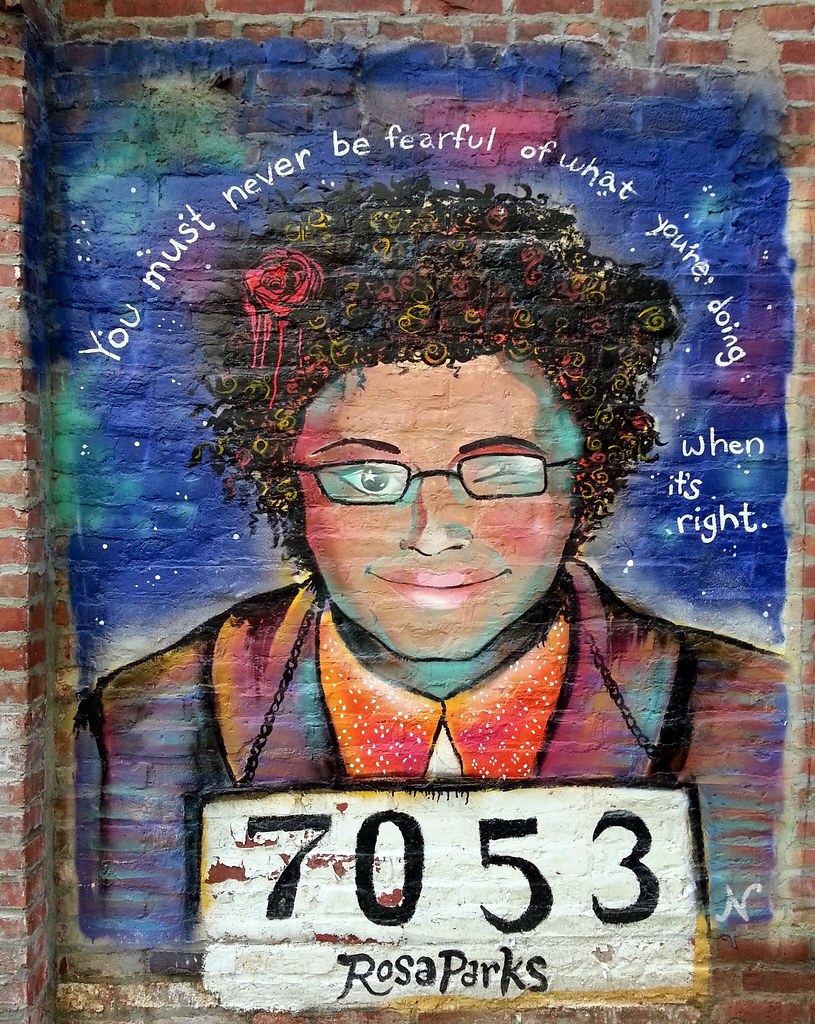
This mural is located in the same community garden as the Dorothy Day piece we saw back in March, along with several other paintings honoring influential women.
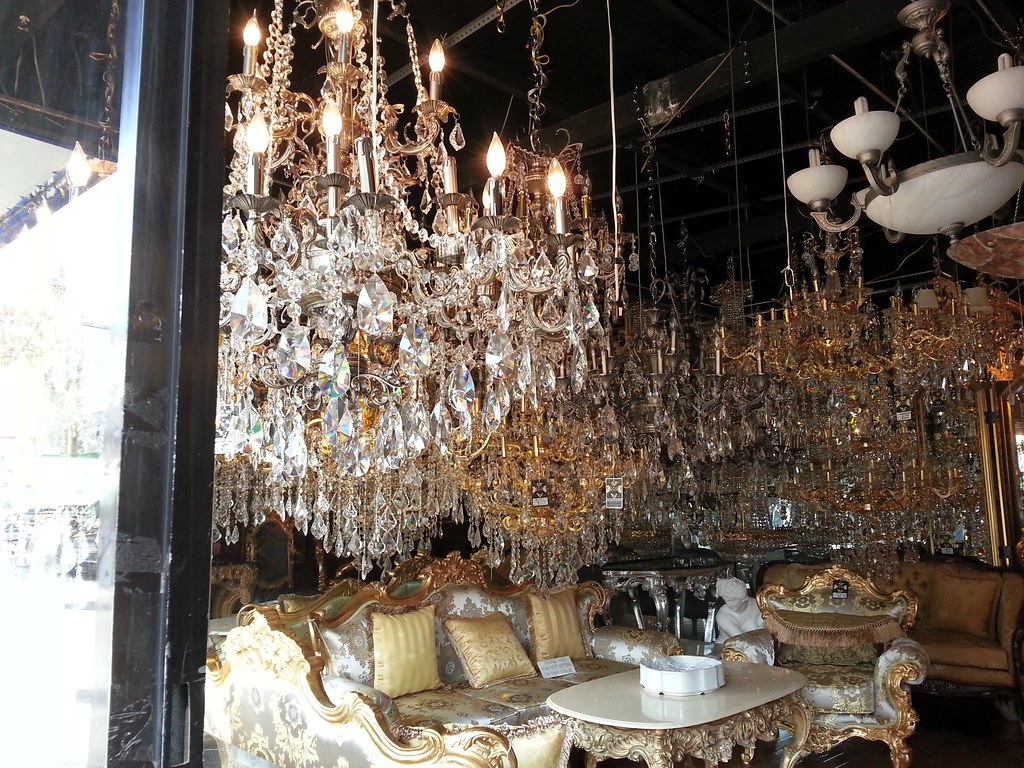
While the Bowery's lighting district is still something to behold, it has been in decline for the last decade or so.

Originally designed to "impress the beholder with its dignity and fortress-like strength on account of the neighborhood in which it is to be located", this former bank is now an upscale event space. You can see some photos of the interior here.
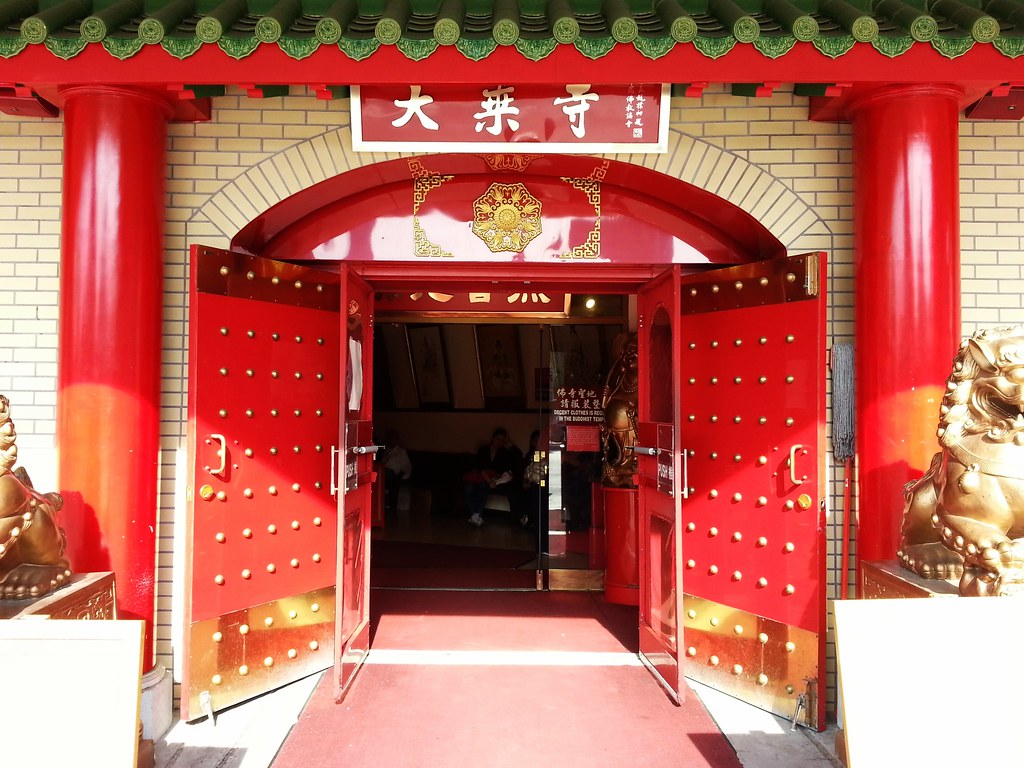
Formerly an adult movie theater, this building now houses what some believe to be the city's largest Buddha.
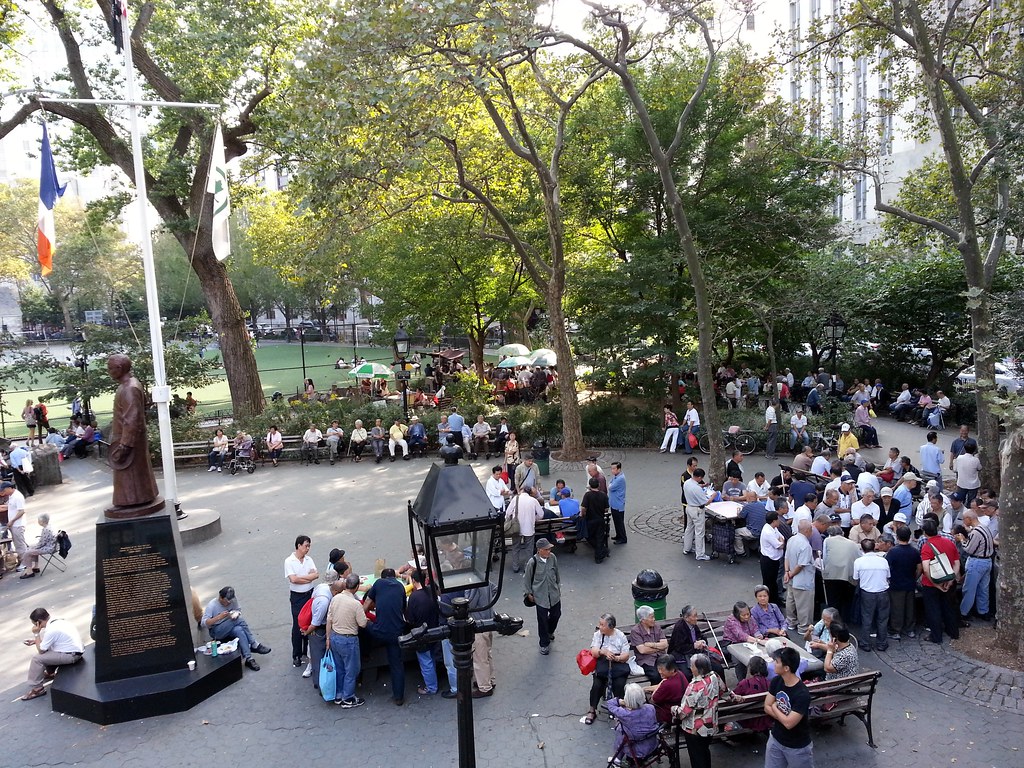
The people gathered around the tables are avidly watching games of cards and Chinese chess, regular pastimes here at the park. At left is a statue of Sun Yat-sen.
That accordion player sure looks familiar.

Located outside the Manhattan Detention Complex visitor entrance. A nearby sign reads:
You are not allowed to enter any DOC facility while in possession of narcotics, weapons, or tobacco products. Lockers are available inside of the building to secure your personal and/or prohibited items. These lockers only accept a quarter for use during your visit. There is also 1 "amnesty box" outside in which you may deposit any illegal substances or items you may have in your possession, no questions asked. All illegal substances or items must be deposited before you enter the first search station and will not be returned.

A sign on the wall of this former firehouse (currently home of the Downtown Community Television Center) proclaims:
This building, constructed in 1895, is among the best of the many eclectic firehouses built by Napoleon Le Brun & Sons. Today it seems surprising that such an elaborate design would be used for so utilitarian a structure. The entire spirit of the building — with its corner tower, steep roof, dormers, and stone and iron crestings — recalls a romantic fairy tale.
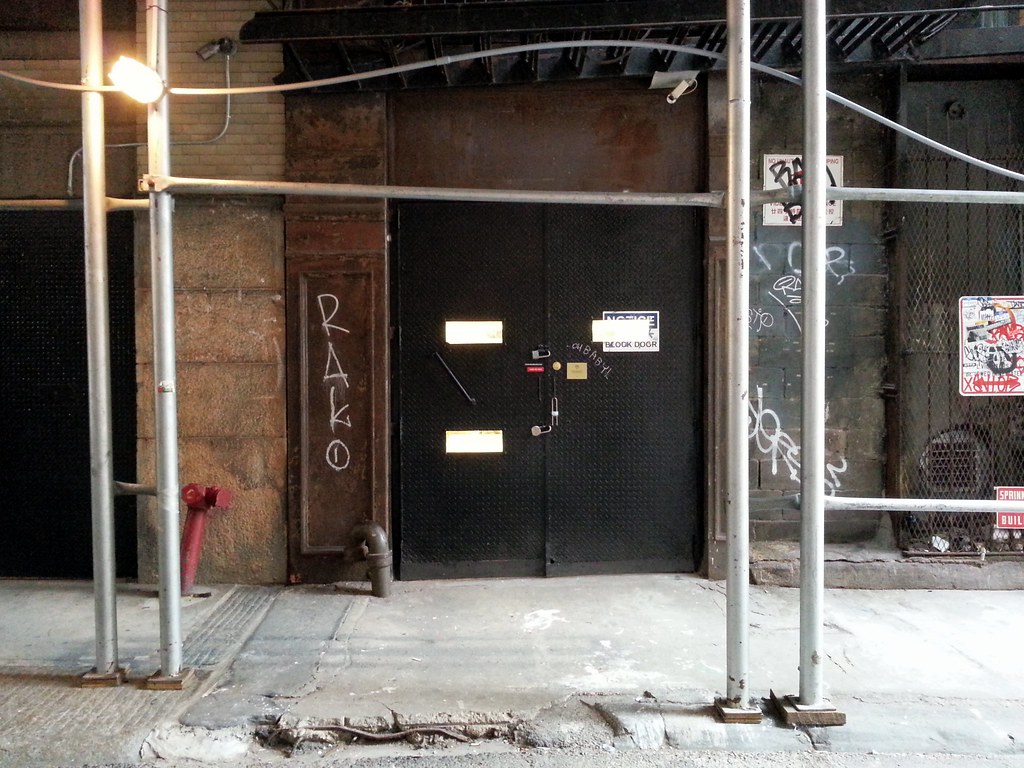
I didn't pay the slightest bit of attention to this freight elevator entrance the first time I passed by on Cortlandt Alley. Fortunately, my route required me to turn around at the end of the alleyway and head back north. As I walked by the second time, I happened to glance to my left, and I noticed a sign reading "SENEGAL" visible through one of those little rectangular windows. So I crossed over to take a closer look...
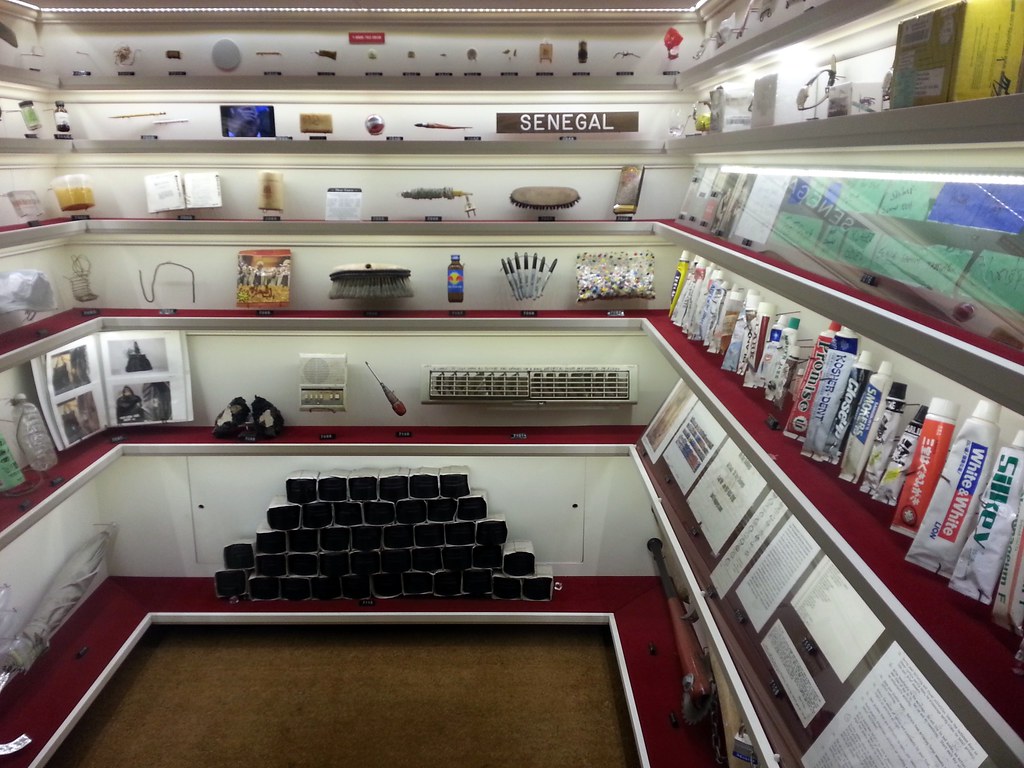
The doors were locked, but a sign inside reads:
MuseumGive 'em a call! You can read many of the reference numbers here and here. I haven't listened to all of them, but a few of my favorites so far are 7087, 7076, 7081, 7058, and, of course, the classic Senegal placard: 7048.
A smart man's garbage is a foolish man's fortune & vice versa.
The Museum boasts an assemblage of assorted collections from around the world.
Strange artifacts and objects removed from their narratives make up these walls. Some are overlooked, and some are overused.
Each item has its own history.
To discover the stories, please refer to the brochure below
or call 1 (888) 763 8839
and enter the object's reference number.
Welcome to the Museum.
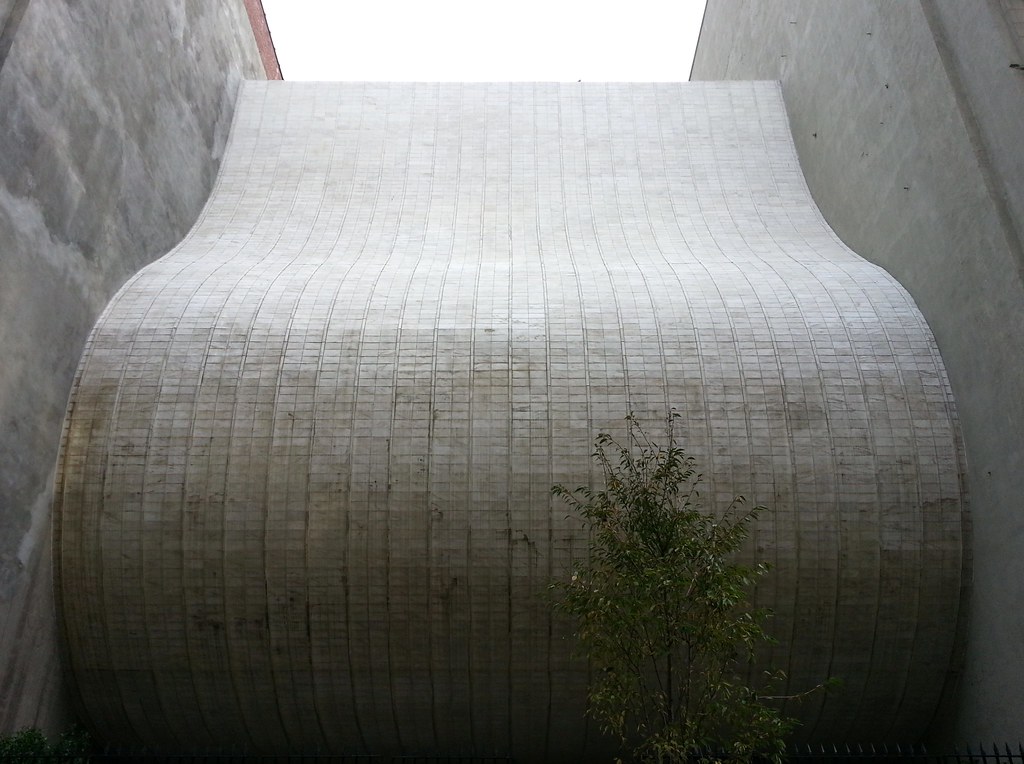
A floating flame amid a sea of rectangles. (Although its buoyancy has been slightly diminished in recent years by a glass security wall installed at its base.) Take a spin around!
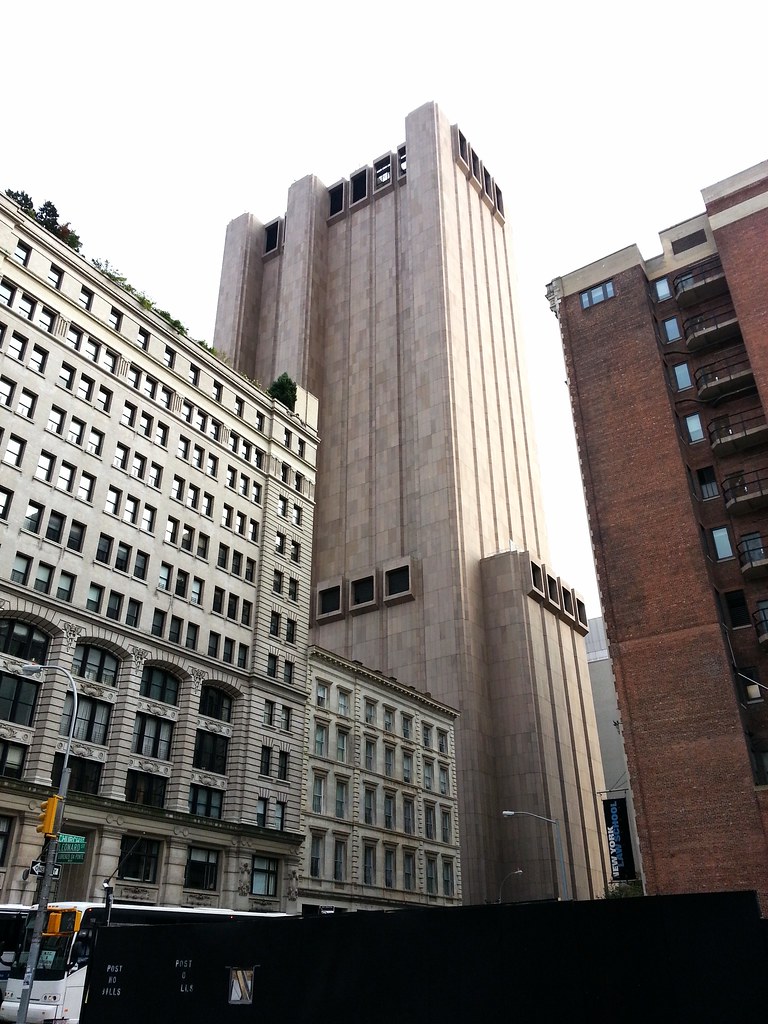
This windowless behemoth, housing telephone switching equipment and a data center, is said to be one of the nation's most secure buildings.
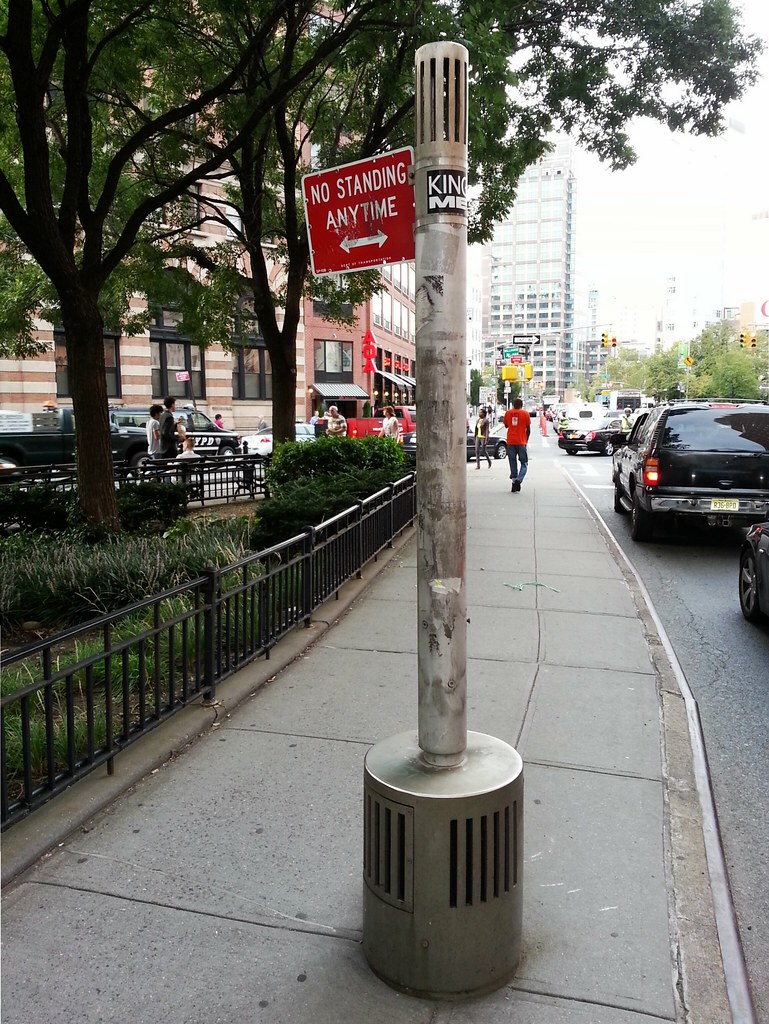
since we've seen a new type of sidewalk vent. This one looks like a modified Holmes.

It's generally good practice to stay away from religious leaders with show-biz names. And this guy's no exception.
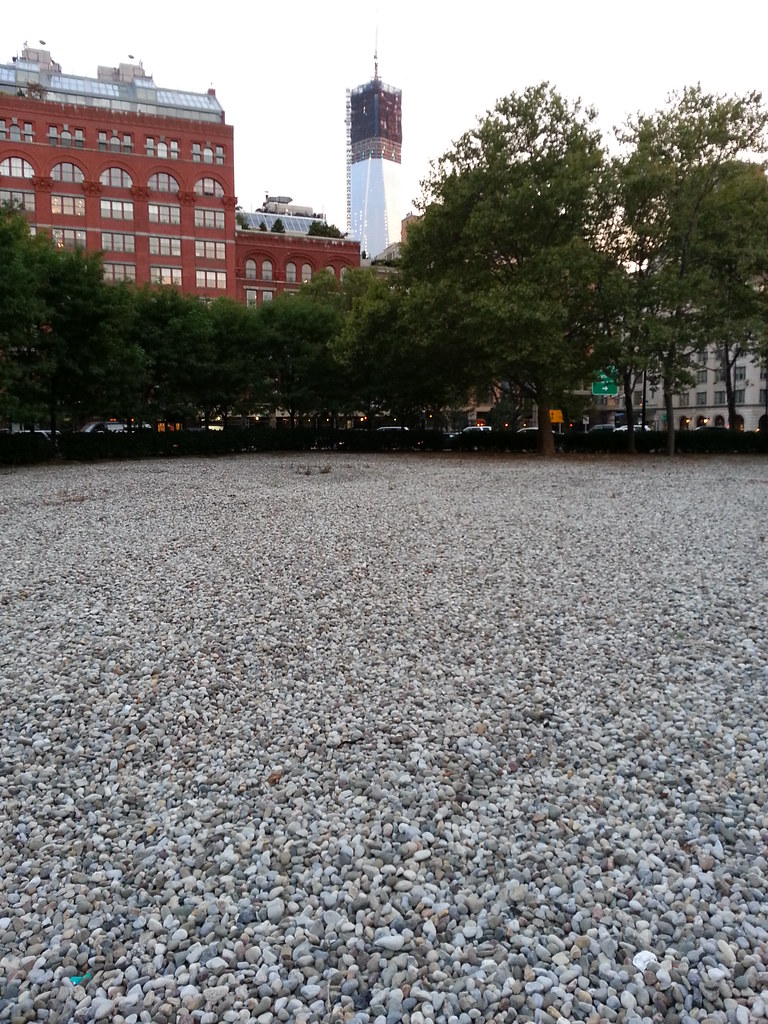
For much of the 19th century, this was an exclusive, gated private park (like Gramercy Park today), accessible only to the affluent families who lived around its perimeter. It was built by Trinity Church, who hoped to lure wealthy residents to the area (then on the outskirts of the city) to support the new chapel being constructed next to the park. As commercial development spread north in the 1840s, the neighborhood found itself surrounded by the working class, and resentment toward the park's closed-off confines grew:
The journalist and all-round labor agitator Mike Walsh regarded the park as an affront to the citizens of New York. "A more exclusive concern than this park does not exist on earth. Its gates are all locked, and keys for it are sold, by the church which claims it, for ten dollars a year, to none however, but the upper ten thousand, who reside in the surrounding palaces. Can anything be more insultingly aristocratic than this?" He made a democrat's protest by climbing over the ornate railing of St. John's Park and strolling on the forbidden gravel paths.Perhaps this outrage had some effect: during the winters of the 1860s, the park's trustees decided to flood the grounds of St. John's and open it to the public as an ice-skating rink.
The park was sold in 1866 and a railroad freight depot was subsequently built on the property. The quality of life in the area declined substantially over the next couple of decades, and the neighborhood had become a "slum" by the 1890s:
Thomas A. Janvier noted "the aggressive presence of several distinctively Neapolitan smells. The stately houses, swarming with this unwashed humanity, are sunk in such squalor that upon them rests ever an air of melancholy devoid of hope. They are tragedies in mellow-toned brick and carved wood-work that once was very beautiful."Completing its ignoble descent into obscurity, St. John's Park is now the inaccessible gravel-filled lot you see here, sitting in the middle of the Holland Tunnel exit rotary.
(In case you were wondering, that's One World Trade Center looming in the background, under construction.)
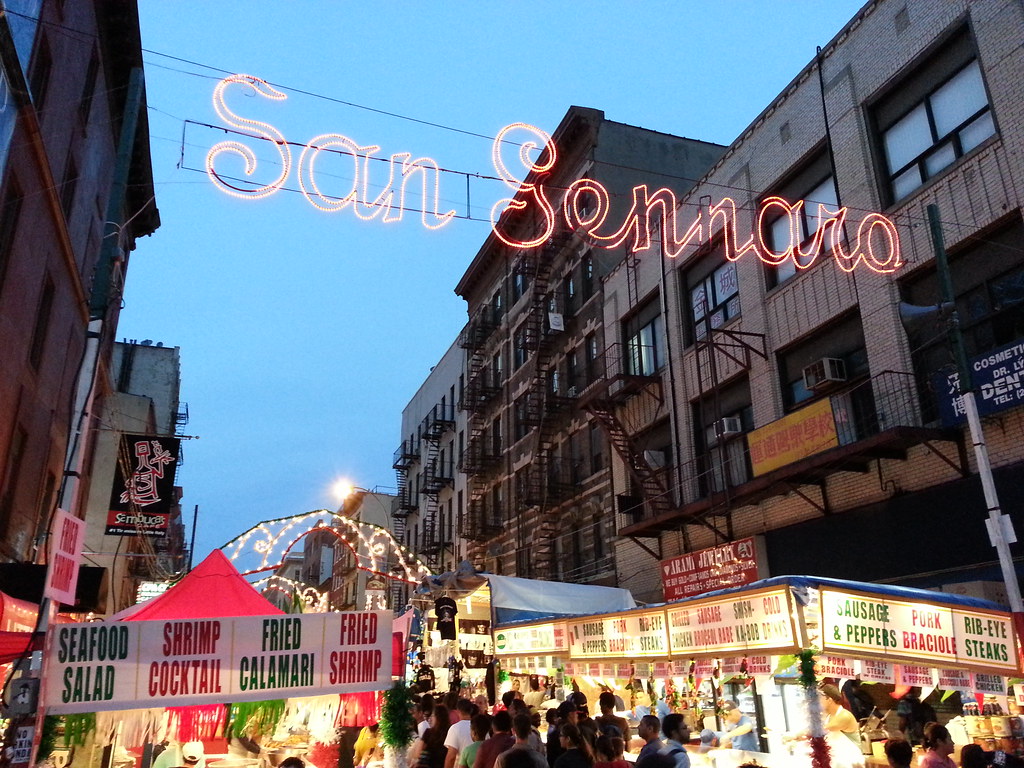
is, I'm sure, the reason that all of these people have come to the Feast of San Gennaro.
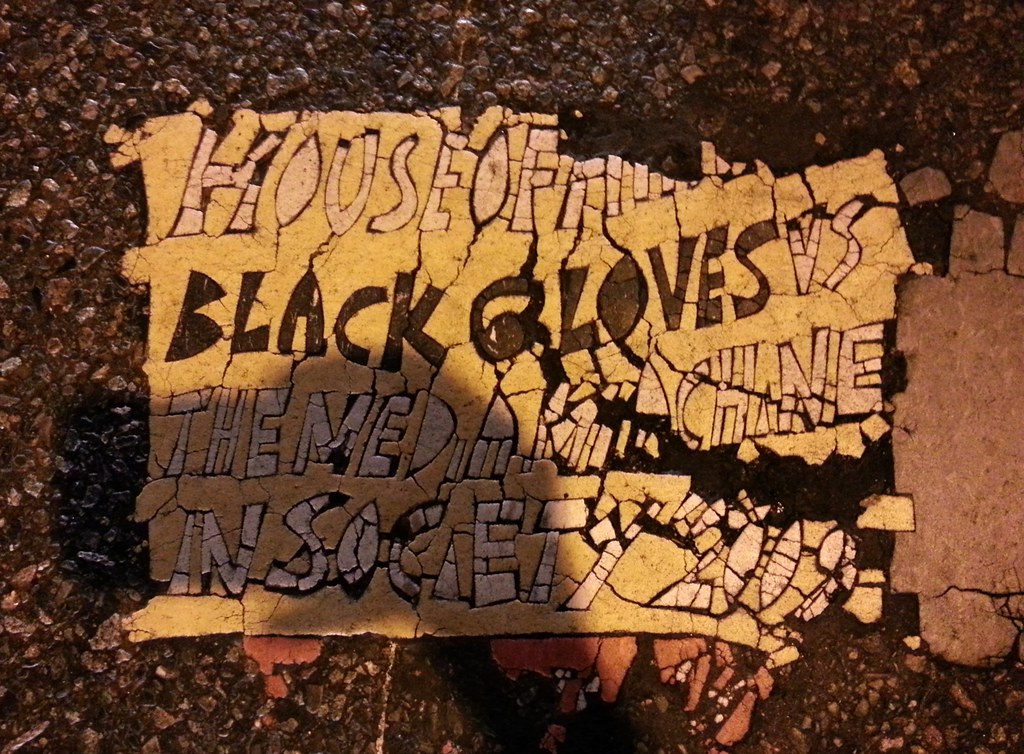
Our third Toynbee tile. (I think the first line is "House of Hades".)

